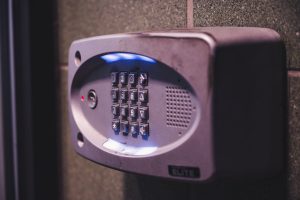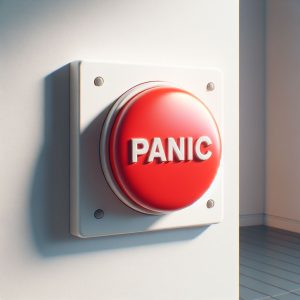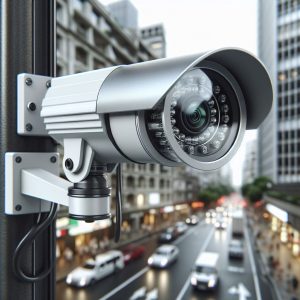Introduction
CCTV systems have become an integral part of modern security infrastructure, helping to deter crime, monitor property, and provide evidence when incidents occur. However, one of the most persistent challenges in video surveillance is maintaining clear visibility in low-light or complete darkness. Traditional CCTV cameras, even those with decent low-light performance, often struggle in these conditions, leading to blind spots or poor image quality exactly when security threats are most likely to occur.
Thermal imaging and night vision technologies have emerged as powerful solutions to this problem. By extending surveillance capabilities into the night and through obscurants like fog or smoke, they help security teams maintain constant situational awareness. This article explores how thermal and night vision cameras work, their advantages and limitations, and how they can be integrated into CCTV systems to enhance security in low-light environments.
Understanding Low-Light Challenges in CCTV
Before diving into thermal and night vision technologies, it’s important to understand why low light poses such a challenge for standard CCTV cameras:
- Reduced Illumination: Standard cameras rely on visible light. As light levels drop, so does image clarity.
- Increased Noise: Low-light conditions introduce electronic noise in images, making details harder to discern.
- Motion Blur: To compensate for low light, cameras may use longer exposure times, causing moving objects to blur.
- Blinding from Lights: Sudden bright light sources (like car headlights) can overwhelm a camera’s sensor in darkness, washing out important details.
Security threats often occur at night or in obscured environments. Therefore, overcoming these challenges is essential for effective 24/7 surveillance.
What Are Thermal Cameras?
Thermal cameras detect infrared radiation (heat) rather than visible light. Every object emits infrared radiation proportional to its temperature. Thermal imaging sensors capture this radiation and convert it into a visible image.
How They Work
- A thermal sensor detects infrared energy.
- The camera assigns colors or shades to temperature differences, creating a “thermal image.”
- Warmer objects (like humans or animals) appear in high contrast against cooler backgrounds.
Advantages of Thermal Cameras
- Complete darkness: Thermal cameras do not need any light source and work in total darkness.
- Long-range detection: Thermal contrast is visible at longer distances.
- Through obscurants: Can see through smoke, fog, light foliage, and even some camouflage.
- Low false alarms: Thermal detection is effective for motion detection in perimeter security.
Limitations
- Lack of detail: Thermal images often lack the fine detail of visible-light images.
- Cost: Thermal cameras are typically more expensive than standard or night vision cameras.
- No facial recognition: They can show a human presence but not identify facial features.
What Are Night Vision Cameras?
Night vision technology typically refers to systems that amplify available light, including near-infrared, to make images visible in darkness.
Types of Night Vision in CCTV
1. Infrared (IR) Illuminated Cameras
- Equipped with IR LEDs that illuminate the scene with infrared light.
- The camera sensor is sensitive to infrared, making the scene appear bright in the camera while remaining dark to the naked eye.
Pros:
- Affordable and widely used.
- Good detail at short to medium distances.
Cons:
- Limited range (typically up to ~100 meters).
- Visible IR glow (low-glow or no-glow options exist, but standard LEDs are visible as a red dot).
- Performance degrades in heavy fog or smoke.
2. Low-Light / Starlight Cameras
- Use highly sensitive sensors to amplify existing ambient light (e.g., moonlight, streetlights).
- Often produce color images even at night.
Pros:
- Better image quality and color in very low light.
- No visible IR illumination required.
Cons:
- Useless in total darkness without any light source.
- Sensitive to light pollution and sudden glare.
3. Image Intensifier Tubes (Traditional Night Vision)
- More common in military or law-enforcement contexts.
- Rare in typical CCTV but used in specialized perimeter or tactical applications.
Thermal vs. Night Vision: A Comparison
| Feature | Thermal Cameras | Night Vision Cameras |
|---|---|---|
| Light Requirement | None (detects heat) | Needs some ambient light or IR illumination |
| Visibility in Total Darkness | Excellent | Good (with IR or starlight) |
| Detail/Identification | Low (silhouettes, heat patterns) | Medium to High (can recognize faces) |
| Performance in Fog/Smoke | Very good | Degraded |
| Cost | High | Low to Medium |
| Typical Use Cases | Perimeter security, search & rescue | General surveillance, access control |
Key Applications of Thermal and Night Vision CCTV
1. Perimeter Security
- Detect intruders before they reach buildings.
- Thermal cameras excel at detecting human or vehicle heat signatures along fences or property lines, even in total darkness.
2. Critical Infrastructure Protection
- Facilities such as power plants, water treatment plants, and data centers often use both thermal and night vision to ensure continuous monitoring.
3. Urban Surveillance
- IR-illuminated cameras cover alleys, streets, and parks with low-light conditions.
- Starlight cameras provide color images at night, aiding police investigations.
4. Wildlife Monitoring
- Thermal cameras detect animals without disturbing them with visible lights.
5. Search and Rescue
- Thermal imaging can locate people in darkness, dense vegetation, or smoky conditions.
Integration with Existing CCTV Systems
Modern CCTV systems can combine thermal, night vision, and conventional cameras for layered security:
- Dual-Sensor Cameras: Combine visible-light and thermal sensors in one housing for side-by-side views.
- Smart Analytics: AI-powered systems can analyze thermal footage to detect and classify objects, reducing false alarms.
- Network Integration: Thermal and night vision cameras can be seamlessly added to existing IP-based CCTV systems.
Advantages of Combining Technologies
No single technology is perfect for all conditions. By combining them:
- Redundancy: If visible-light cameras fail in darkness or fog, thermal cameras continue working.
- Improved Identification: Thermal detects presence; night vision identifies individuals.
- Fewer Blind Spots: Layered technologies reduce overall surveillance gaps.
Challenges and Considerations
While thermal and night vision cameras greatly enhance CCTV capability, they present some challenges:
- Cost: Thermal cameras, in particular, can be expensive.
- Training: Operators need to understand how to interpret thermal images correctly.
- Privacy Concerns: Advanced low-light imaging raises issues about constant surveillance and civil liberties.
Future Trends
The field is evolving rapidly:
- AI Integration: Machine learning is improving object detection and reducing false alarms in low-light footage.
- Sensor Fusion: New cameras combine visible, thermal, and low-light sensors for better context.
- Price Reduction: As technology matures, thermal imaging costs are dropping, making it more accessible for smaller businesses.
- Edge Processing: Smart cameras analyze footage locally for faster alerts.
Conclusion
Thermal and night vision cameras have transformed modern CCTV systems, enabling effective surveillance in darkness and challenging conditions. By extending the reach of security systems beyond daylight and clear weather, they help organizations secure perimeters, protect assets, and ensure public safety.
While each technology has its strengths and limitations, the real power lies in combining them with traditional CCTV systems and smart analytics. As technology advances and costs fall, these advanced imaging solutions will become an increasingly standard part of security infrastructure—helping keep people, property, and critical facilities safe 24/7.
Secure Your Home and Business with Garrison Alarms!
Experience unmatched safety with Garrison Alarms – your trusted partner in cutting-edge home and business security solutions. With over 35 years of experience, we offer expert installation, state-of-the-art technology, and personalized security strategies tailored to your unique needs.
Our Services Include:
- Home & Business Alarms: Maximize security with our advanced wired and wireless alarm systems.
- CCTV Systems: Protect your property with high-resolution, 4K HD, and color night vision cameras.
- Access Control: Secure your premises with keypad entry, biometric solutions, and more.
- Alarm Monitoring: 24/7 monitoring to ensure your safety and peace of mind.
Why Choose Garrison Alarms?
- Expert & Professional Service: Our licensed technicians provide top-notch installation and support.
- Customer Satisfaction: We prioritize your security and satisfaction with a focus on quality and reliability.
- Affordable Pricing: Get the best security solutions at competitive prices.
Get a FREE Quote Today! Visit Garrison Alarms or call us at 09 520 4875 to learn more and secure your property today!
Garrison Alarms – Your Safety, Our Priority




